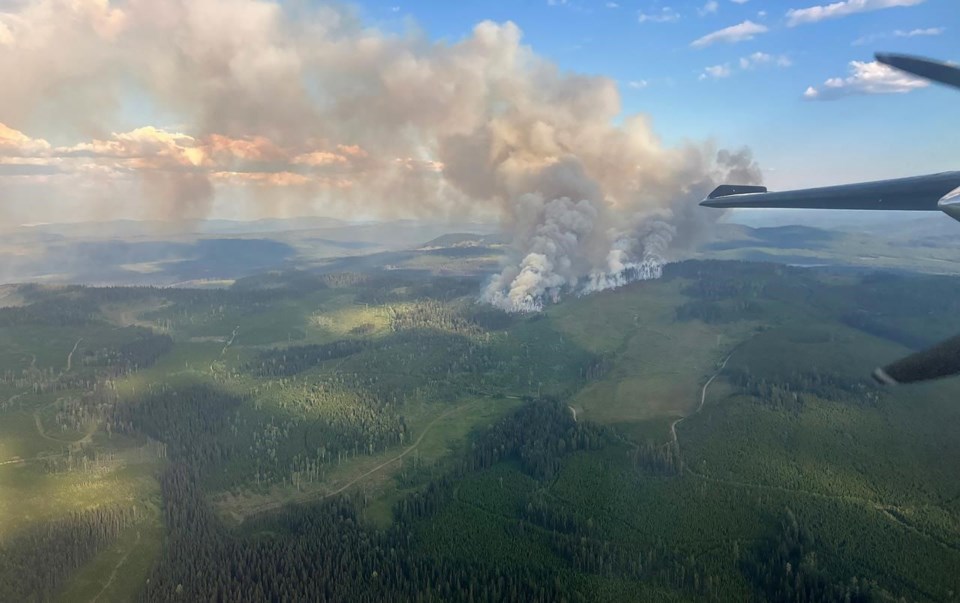VANCOUVER — Recent rainfall has allowed for a "slight reset" of the wildfire fight in northern British Columbia but "doesn't erase all the challenges" of this year's historic fire season, Emergency Management Minister Bowinn Ma said Thursday.
"While the rain did give our hardworking firefighters a chance to take a deep breath, the wildfire and drought situation remains largely unchanged due to the drought conditions we have been seeing since last summer," she told a news conference on Thursday.
The wildfire danger rating has dropped to moderate or low in all but the southeastern corner of the province, however Ma warned that the recent rain and cooler weather don't ease severe drought conditions across B.C.
The BC Wildfire Service was reporting 395 active wildfires as of Thursday afternoon, down by about 90 since Monday. Twenty-one highly visible or potentially threatening fires were listed on the service's website, with just five new blazes recorded in the previous 24 hours.
Wildfire Service director of operations Cliff Chapman said efforts are now being concentrated on the South Cariboo, Kamloops Fire Centre and Southeast Fire Centre.
"While we will see resources supporting the south with the increased activity, we are maintaining resources on our northern fires, where we have this significant activity over the course of the last two months," he said.
Environment Canada is predicting another warming trend is on the way and points to a risk of thunderstorms to wrap up the week in many areas from the central coast, Cariboo and southern Interior to the northeast and southeast regions of the province.
A handful of evacuation orders have been downgraded to alerts in several parts of B.C., including for an area near the 41-square-kilometre St. Mary River wildfire that broke out 10 days ago near Cranbrook, destroying seven homes north of the city.
Ma said that as of 3 p.m. Wednesday, 1,060 people had been ordered to evacuate their homes due to wildfires, with 5,430 more under evacuation alerts, requiring them to be ready to leave at short notice.
As of Thursday, nine of the province's 34 water basins were at Level 5 drought conditions, meaning all efforts should be made to conserve water and protect critical environmental flows. A further 14 are at Level 4, meaning harm to ecosystems and communities is likely.
"The province is actively monitoring conditions and we continue to work with communities on drought response planning," Ma said.
The wildfire service says1,498 mostly lightning-caused fires have been recorded in B.C., since the start of the season on April 1, charring a record-breaking 15,142 square kilometres of trees, bush and grassland.
Forests Minister Bruce Ralston said more out-of-province firefighters from Ontario and Costa Rica are expected to join the more than 600 other firefighting personnel currently in place from the United States, Mexico, Australia and Brazil.
"There are over 3,000 personnel directly engaged in wildfire response across the province today," he said.
The province is expecting 100 firefighters and two agency representatives from Costa Rica, the wildfire service confirmed in an email.
Chapman said the service initially asked for 100 firefighters from Ontario, "which was going to be for surge capacity for us knowing that it's going to heat up next week." He said that is likely not possible, but two incident management teams of 10 to 14 people are expected to arrive this weekend.
Chapman said this comes as concern that fires will flare in the next week remains high, noting that August is typically the hottest and driest month.
"The hazard is not gone," he said. "The fire season is long from over at this point in time."
This report by The Canadian Press was first published July 27, 2023.
Brieanna Charlebois, The Canadian Press



